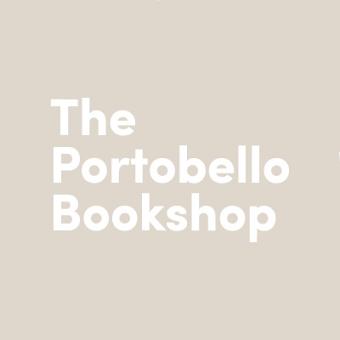New York Modern
The Arts and the City
Peter M Rutkoff author William B Scott author
Format:Paperback
Publisher:Johns Hopkins University Press
Published:24th Aug '01
Currently unavailable, and unfortunately no date known when it will be back

It is surprising that no one has attempted previously what the authors accomplish in this book. New York Modern provides a history of manifestations of 'the modern' in the visual arts, music, dance, architecture, and drama in New York. The authors' comprehensive, engaging, and informative account connects Greenwich Village and Harlem with one another and with many points in between and beyond. There can be no doubt that New York has played a far more important role than any other American city in defining the meaning of modern in the arts, and over the last five decades has played a larger role than any other city in the world. This is an important work that offers unique and valuable insights, and a wealth of information, to those interested in art, concepts of the modern, New York City, and twentieth-century cultural and intellectual history. -- George H. Roeder, Jr., School of the Art Institute of Chicago
Handsomely illustrated and engagingly written, New York Modern documents the impressive collective legacy of New York's artists in capturing the energy and emotions of the urban experience.New York City's crowded streets and energetic people, its vast population and enormous extremes of wealth and poverty, its towering buildings and technological marvels have marked it as the quintessential modern city since the turn of the century. Artists in particular identified with New York's newness, believing that it embodied the future and celebrated the excitement of the modern urban lives they both witnessed and led. In New York Modern, William B. Scott and Peter M. Rutkoff explore how the varied features of the urban experience in New York inspired the works of artists such as Isadora Duncan, Alfred Stieglitz, Georgia O'Keeffe, Eugene O'Neill, Duke Ellington, Clifford Odets, Elia Kazan, Miles Davis, John Coltrane, Jackson Pollock, Merce Cunningham, John Cage, Allen Ginsberg, Arthur Miller, James Baldwin, and Diane Arbus, who together shaped twentieth-century American culture. In painting, sculpture, photography, film, music, dance, theater, and architecture, New York artists redefined what it meant to be "modern." Rooted in the urban realism of Walt Whitman, Thomas Eakins, and Edith Wharton, New York artists combined the revolutionary ideas and styles of European modernism with vernacular images drawn from American commercial, folk, and popular culture in their attempts to respond to the cacophony of voices and blur of images drawn from the city's bars and cafes, tenements and townhouses, skyscrapers and docks. Handsomely illustrated and engagingly written, New York Modern documents the impressive collective legacy of New York's artists in capturing the energy and emotions of the urban experience.
This history is as lively as its subject, clarifying the genealogy of the successive rebellions that marked the unfolding of modernism. It pays particular attention to the contributions of African Americans, helping us see, for example, the link between bebop and Abstract Expressionism. New Yorker New York Modern mirrors the bewildering welter of its subject-zigzagging through time to cover the evolution of different neighborhoods... expand[ing] our understanding of the city as the primary muse, site, and subject of 20th-century creative activity. The authors make this argument convincingly, through an accretion of innumerable details. -- Leslie Camhi VLS This is a wonderful survey of the artistic life of a great and complex city. It is like a panorama, a sweeping history of a century of artistic production, of cultural pretension and achievement. -- Serge Guilbaut Journal of American History Scott and Rutkoff explore the energy and vitality of the city from Greenwich Village to Harlem as a supportive (and destructive) environment for the arts. Like a nonfiction Ragtime, the book presents a cast of characters that is remarkable, from Robert Henri and his school of art at the beginning of the century through Steiglitz and O'Keefe to the happenings of Cunningham and Cage in the 1960s. While solidly based in scholarship, the lively, well-organized prose provides enough colorful detail to keep the pages turning. Library Journal (starred review) Scott and Rutkoff... distill an enormous range of scholarly work... The authors' clear vision of New York as the center of a plurality of modern arts, particularly after WWII, is bolstered by their minute attention to the social structures and political ideals that undergirded the polis and supported the artistic community. They are particularly astute in their scathing indictment of 1950 and '60s urban renewal, and in their documentation of Harlem's central role in all the arts. Publishers Weekly A demanding, spirited study of New York's engagement with Modernism... All students of New York City's artistic achievements will have to start with this book. -- Joel Schwartz New York History In their exceptionally well-researched study, William Scott and Peter Rutkoff explore the centrality of New York City in the development of a vibrant, modern American culture... Their's is a rich and satisfying chronicle of the seemingly impossible, a thorough account of New York cultural life between 1876 and 1976... Scott and Rutkoff capture the vitality of the city as well as the individuals and institutions that made possible a modern, democratic American culture by focusing on the multiple roles that New York City played in the lives of the artists and institutions they investigate. -- A. Joan Saab H-Urban, H-Net Reviews
ISBN: 9780801867934
Dimensions: 254mm x 178mm x 29mm
Weight: 930g
472 pages